Want to become a master plumber? Follow these tips.
28 Tips for Becoming a Master Plumber
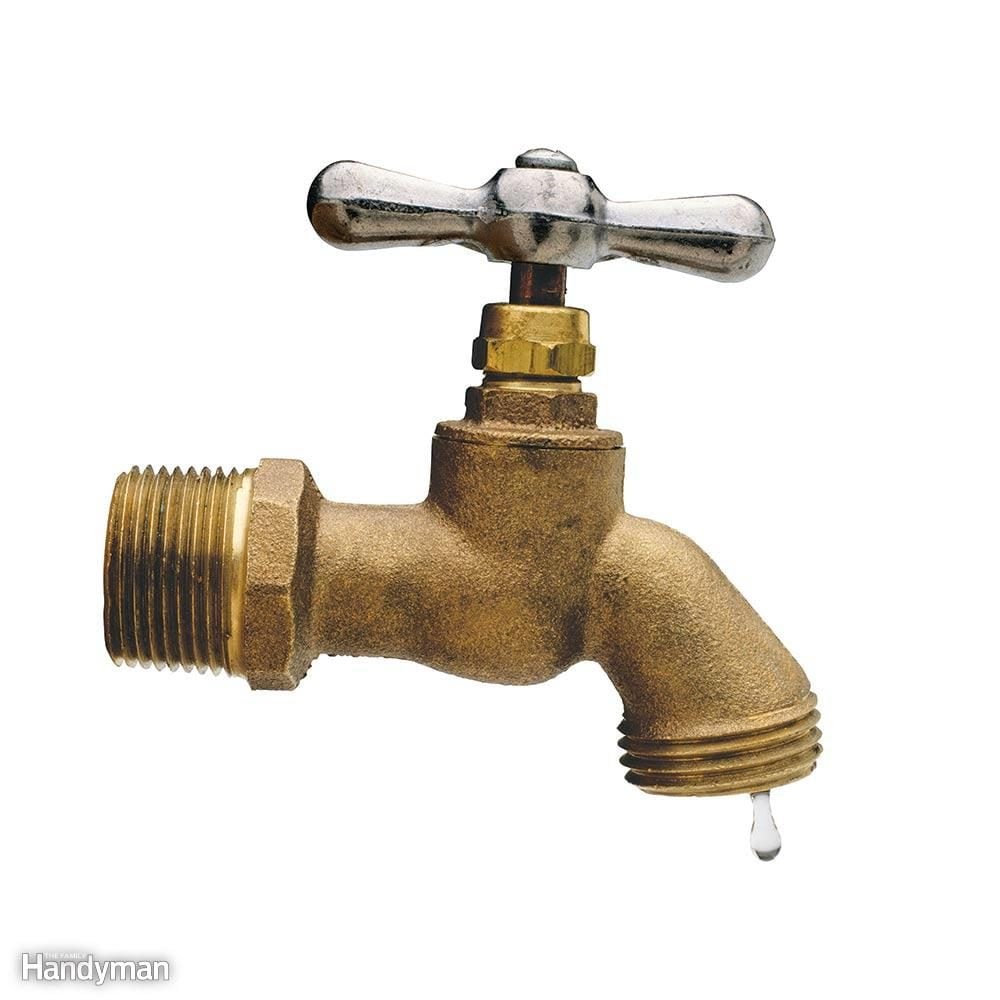
Buy Extra Plumbing Parts
Buy more than you need to save extra trips. No matter how carefully you plan, it seems like you always need another elbow or extra length of pipe. Save yourself a trip to the store and buy extra the first time. Then return what you don’t use.
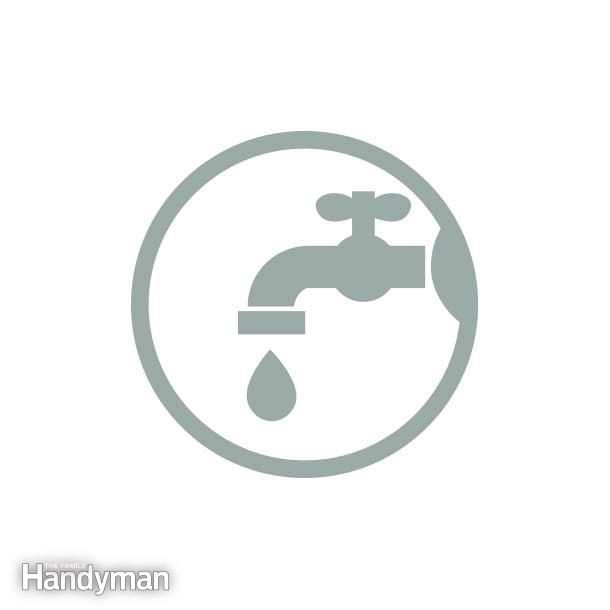
Take a Photo or Old Plumbing Parts to the Store
If you have to ask for help finding parts, it’s easier if you have a photo or the original parts along. Here are the best pro tips for old plumbing maintenance.
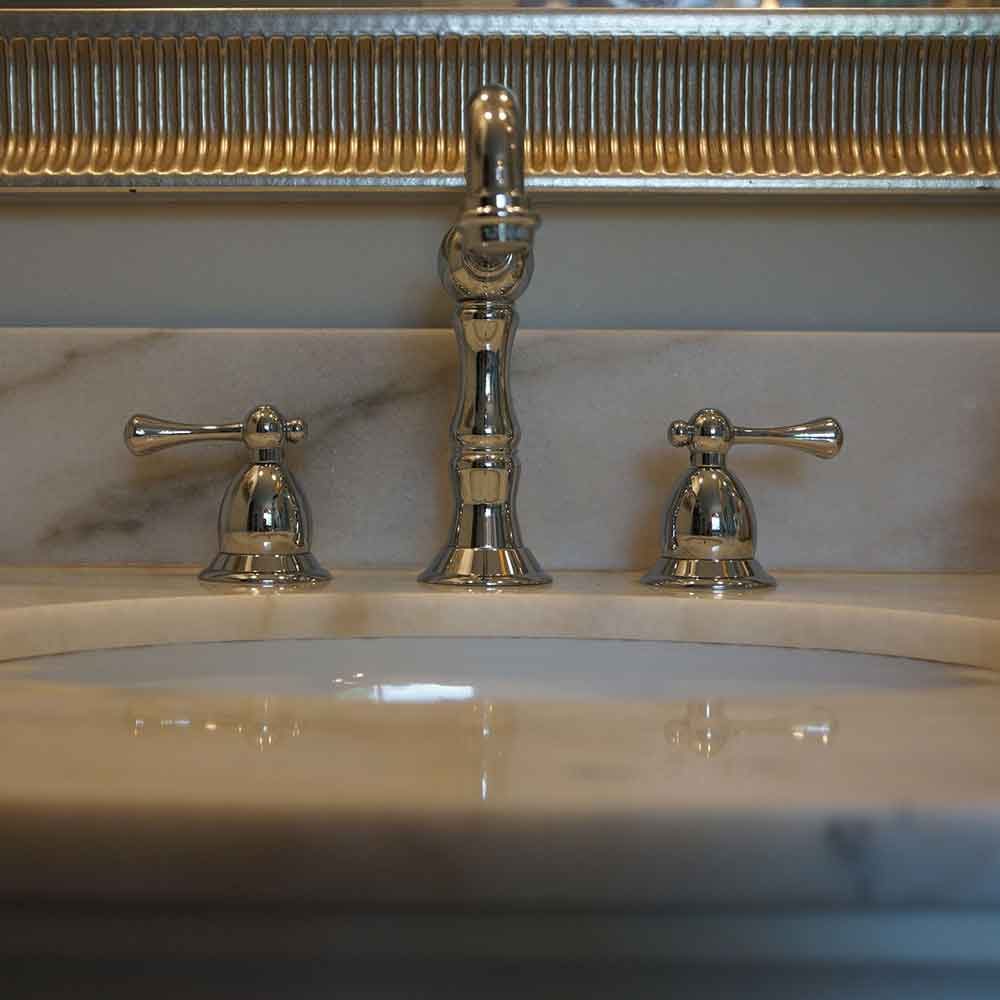
New Faucets
Proper cleaning can greatly extend the life of your faucets, but sometimes there’s no cure for dated style, except a replacement. When dealing with any faucet, the toughest part of the job can be removing the old one. Once that is done, and you follow our guide to replacing your kitchen or bathroom faucet you should have no problem getting a look you love for less. Photo: Melina Gillies
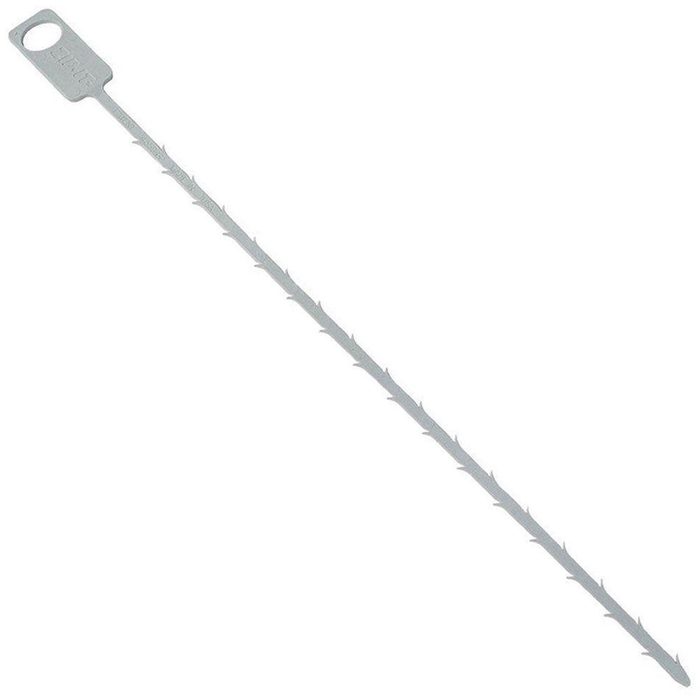
Zip-It Bath and Sink Hair Snare
One of the most common plumbing problems homeowners face is a clogged sink or tub drain. Most often, the culprit is simply a clump of hair that has become lodged in the drain. Add this inexpensive Zip-it Bath and Sink Hair Snare to your homeowners tool kit so you can remove the hair without the hassles of disassembling the plumbing. Just slide the tool into the drain opening and retract slowly. You might be surprised at the volume of hair the tool snags on its way out.
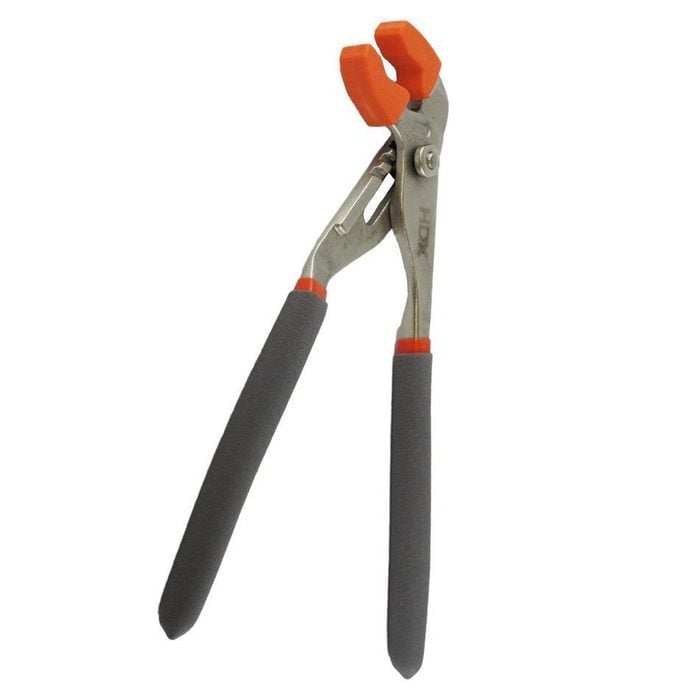
10-in. Soft Jaw Pliers
A pair of soft-jaw pliers are a must have for DIY plumbing repairs around your home. Many have made the mistake of tightening a new showerhead or other decorative item with a pair of pliers only to realize they just ruined its finish by scratching and gouging the new product with the tool. Soft-jaw pliers will eliminate this mistake from ever happening again. The dual-function pliers are fitted with removable rubber covers that protect your finished product during installation.
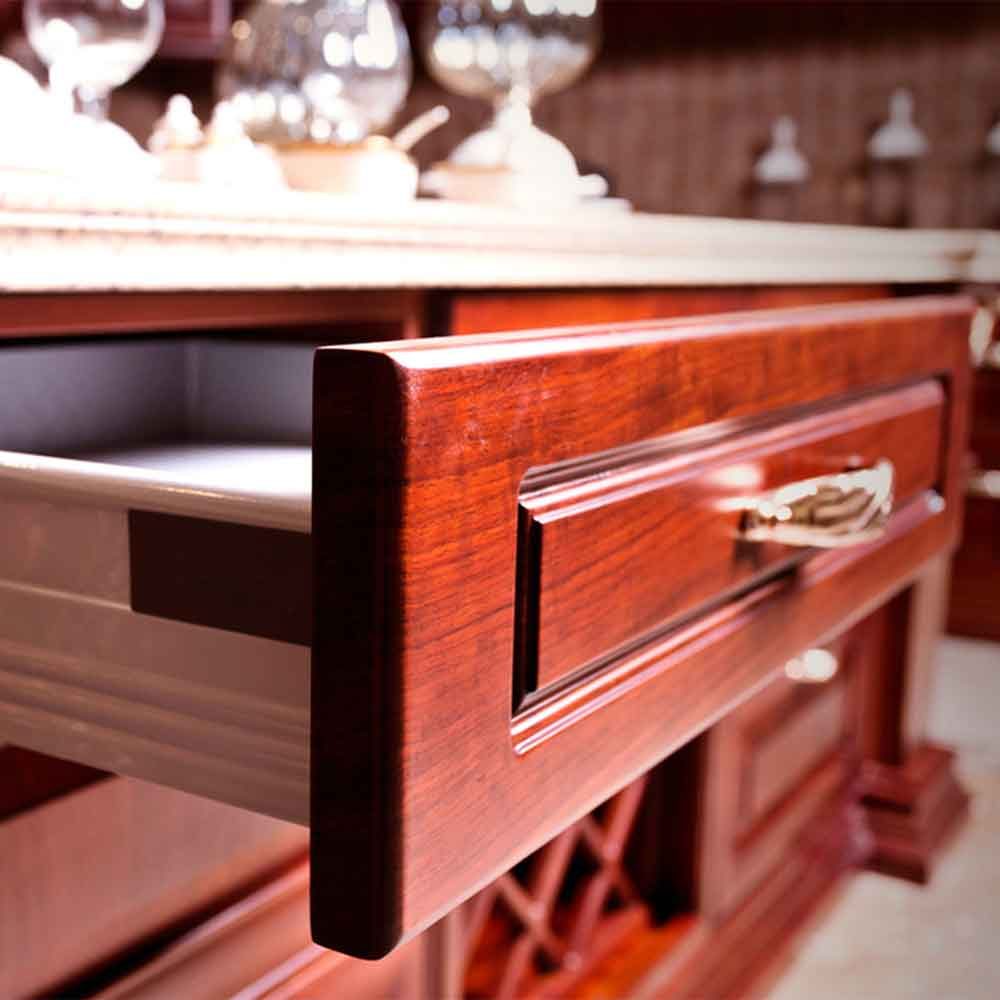
Kitchen Updates: Replace Hardware
Take a look at your handles and knobs. If they are showing their age, consider picking up a new set and installing them. You may be surprised how much difference new hardware can make in your kitchen. An old drawer can look new again with a sleek, clean handle. Even sink fixtures like faucets are usually quite affordable and easy enough to switch out for a quick renovation.
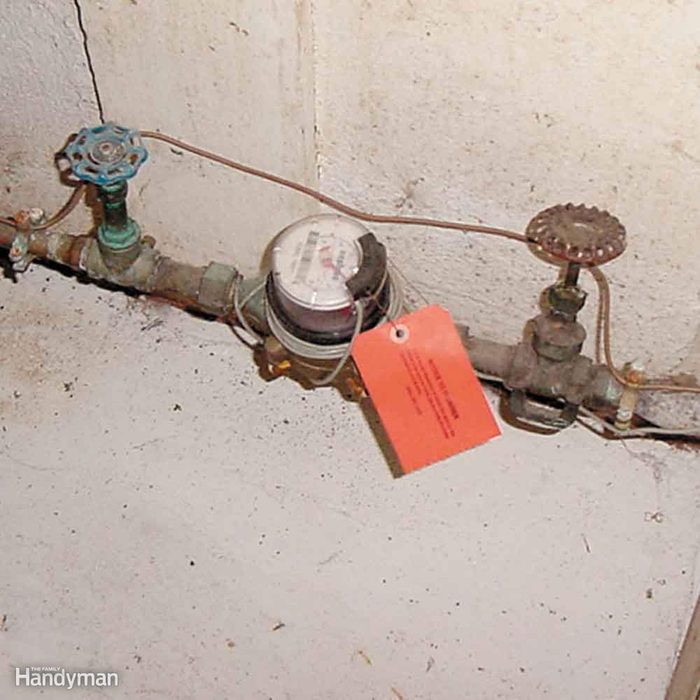
Locate Your Home’s Main Water Shutoff Valve
Know where you main water shutoff valve is in case you need to shut off the water to your entire house. Almost all homes have one main shutoff valve directly before the water meter and another directly after. Where the meter is located depends on the climate in your area.
In cold climates, the meter and main shutoff valves are located inside, usually in a basement or other warm area to prevent freezing. In milder climates, the meter and its two shutoff valves may be attached to an exterior wall or nestled in an underground box with a removable lid.
Between the water main in the street and the meter, there’s also usually a buried curb stop valve (accessible only by city workers wielding special long-handled wrenches) and a corporation stop, where your house water line hooks up to the water main. Your city absolutely doesn’t want you messing around with these valves. Turn your water off or on using the main valve on the house side of the meter. This valve will normally be a gate-type valve, with a round knurled handle, requiring several full clockwise rotations to turn off. In newer homes, it could be a ball valve. Find out more about main water shutoff valves here.

If You Have a Sump Pump, Does it Work?
It’s easy to forget about your sump* pump, but it’s important to make sure it’s in good working order. If you don’t, you could end up like the homeowner who returned from a weekend trip to discover his entire basement floor covered in 1/2 in. of water. After shutting down the power, he waded over to the sump pump and noticed it wasn’t working. Upon closer inspection, he realized that the cable attached to the float must have gotten tangled somehow.
It took him two seconds to untangle the cable, and then he spent the next 15 hours dragging out waterlogged carpet, running the wet/dry vac and moving fans around. To avoid a similar disaster, be sure your pump has a vertical float switch. Also, check your pump at least a couple times a year by dumping water into the basin to make sure everything is working properly. Learn more about sump pump backups here and here.
*A sump is a pit, well, basin or the like in which water is collected. In a basement, excess water collected in a sump is removed by a sump pump.

Faucet Aerators
Aerators are found on almost every kitchen and bath faucet, and if water flow slows or becomes uneven, clogs inside the aerator are usually the cause. Fortunately it’s an easy problem to fix. If you spot rust on your chrome faucet, check out how to clean rust from chrome bathroom fittings.
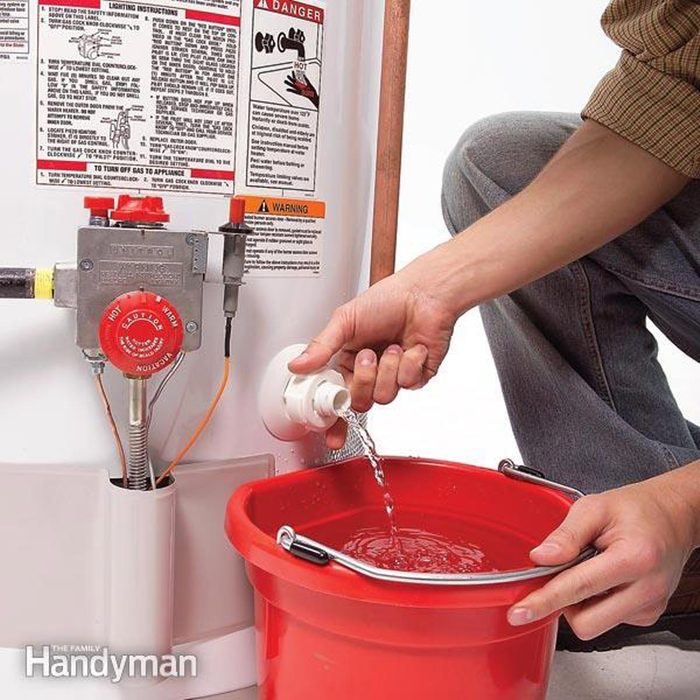
Check Your Water Heater
Extend the life of your water heater tank and maintain your water heater’s efficiency and safety with a few minutes of basic maintenance once a year. Learn how to clean sediment from your water heater here.
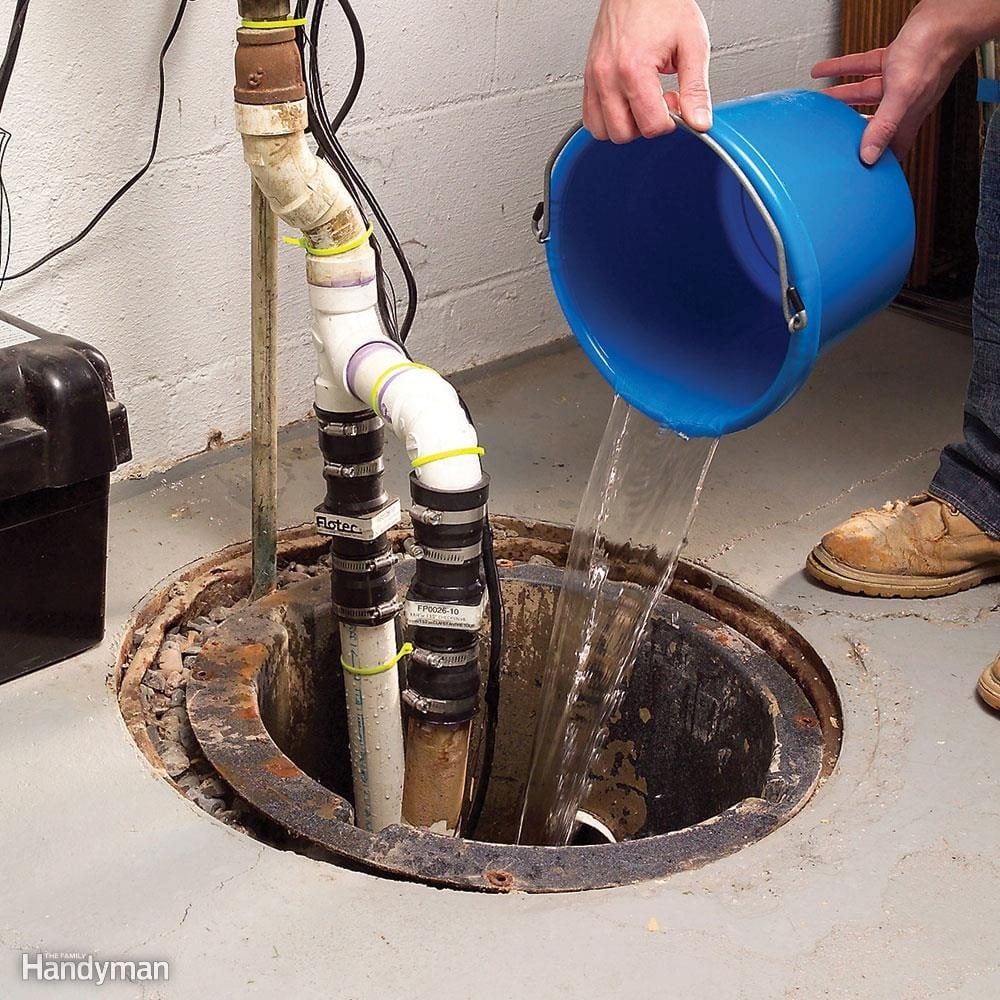
Test Your Sump Pump Before the Beginning of the Rainy Season
Pour water into it to make sure it works. The most common time for a sump pump to fail is the first heavy rainfall after months of not being used. The submerged or partially submerged portions of cast iron pumps can rust and seize. And they’ll burn out when they switch on. Don’t get caught with your pump down and the water rising.
After a long dry (unused) spell, pour a bucket or two of water into the sump to make sure the pump kicks on. And do you have sump pump backup? A good sump pump installation should include a backup system for breakdowns and power outages. Learn the pros and cons of four pump backup methods here.
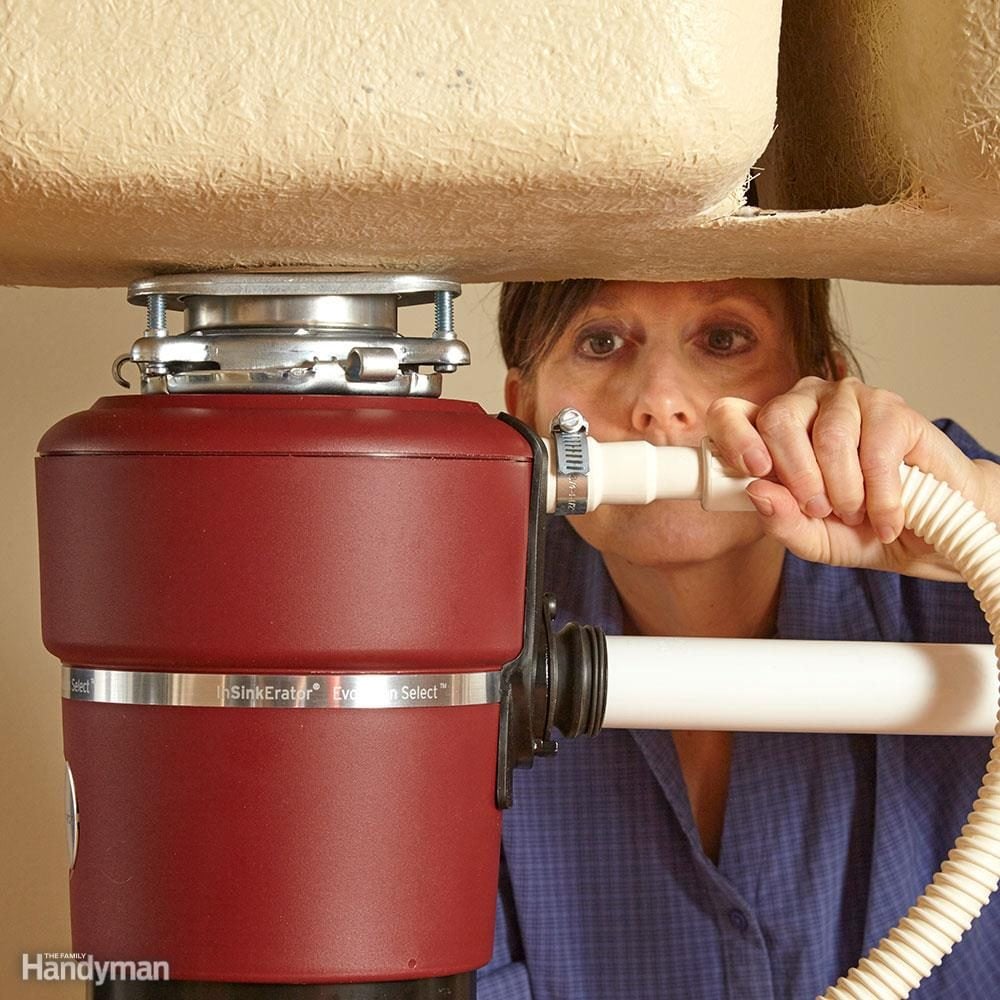
Forgetting Crucial Installation Steps
Installing a new garbage disposal is a perfect DIY project. You don’t need lots of tools, you get the satisfaction of solving the problem without hiring a pro, plus you save a bundle of cash. There’s just one very important thing that may not be mentioned in the installation instructions: You have to remove the factory plug from the drain line that runs to the dishwasher. If you don’t remove this plug, your dishwasher won’t be able to drain. For 14 additional ways to avoid leaks and mistakes when installing a garbage disposal, check out this guide.
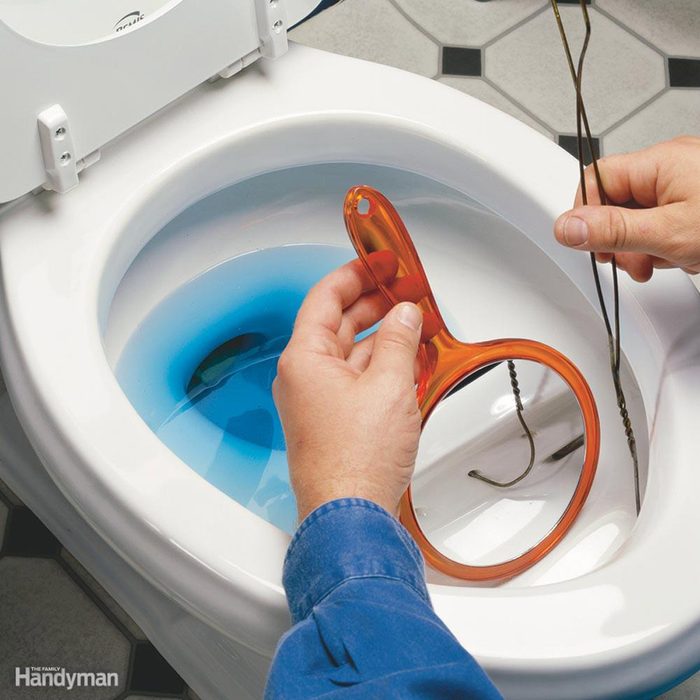
Clean a Sluggish Toilet
If your toilet flushes slowly, the rinse holes under the rim may be clogged with mineral deposits. (Get a refresher on the parts of a toilet.) Use a hand mirror to see the holes under the rim of the toilet. Bend a coat hanger flat and probe the tip into the holes to poke out any deposits. You can clean out those clogged holes without ever getting your hands dirty.
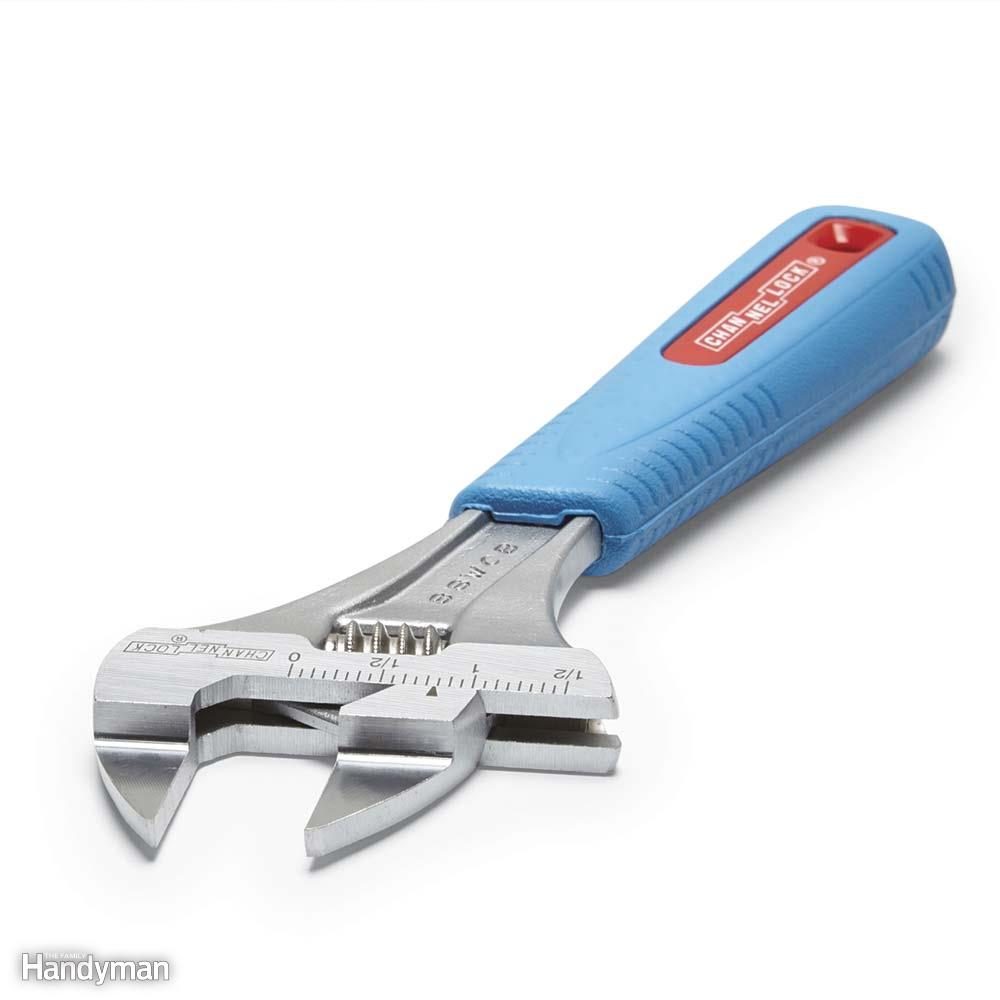
Wrench for Hard-to-Reach Spots
There have been several variations and improvements on the old adjustable wrench, but none of them seem to solve the two problems that are encountered most: jaw capacity that’s too small and jaws that are too thick. That’s why Channellock’s new Xtra Slim Jaw WideAzz adjustable wrenches stand out.
The jaws are 40 percent thinner than on conventional adjustable wrenches. That makes them perfect for plumbing jobs where you need a thin wrench to hold the body of a compression or flare fitting while you tighten the nut with a second wrench. Also, these wrenches have an extra-large jaw capacity that works great for most household, automotive, small engine and yard equipment repairs.
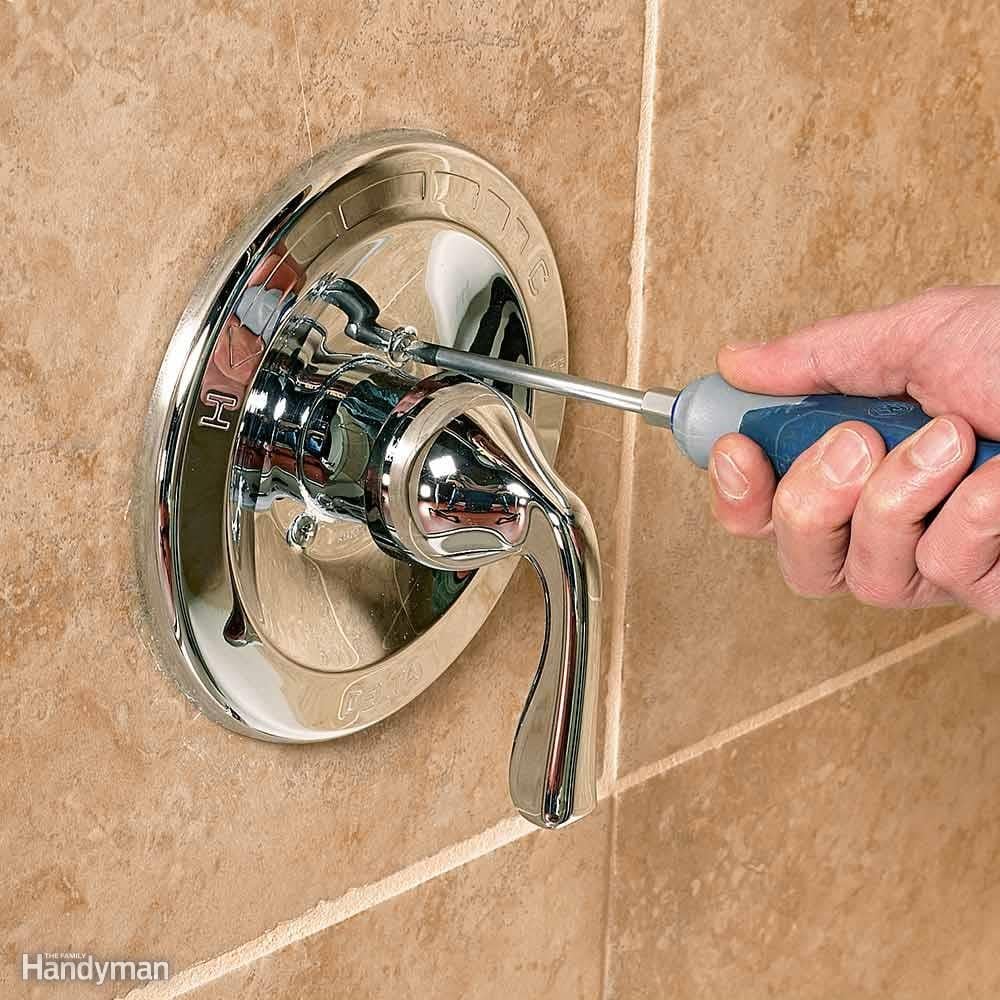
Install a New Tub and Shower Trim Kit
Give your shower an instant face-lift by swapping out your existing showerhead, handle and tub spout for new ones. To make this a painless switch, buy a trim kit that uses the existing trim valve—you won’t have to touch anything inside the wall. Before you buy, check the manufacturer’s Web site for specs, styles and finishes. Also check your tub spout to see if it slips on or is threaded so you can buy the right replacement. You can buy complete trim kits or buy each component separately at home centers, plumbing suppliers and online retailers.

Does it Meet Code?
There is no unified national plumbing code. Before starting your PEX supply plumbing job, check with your local inspector for specific local requirements.
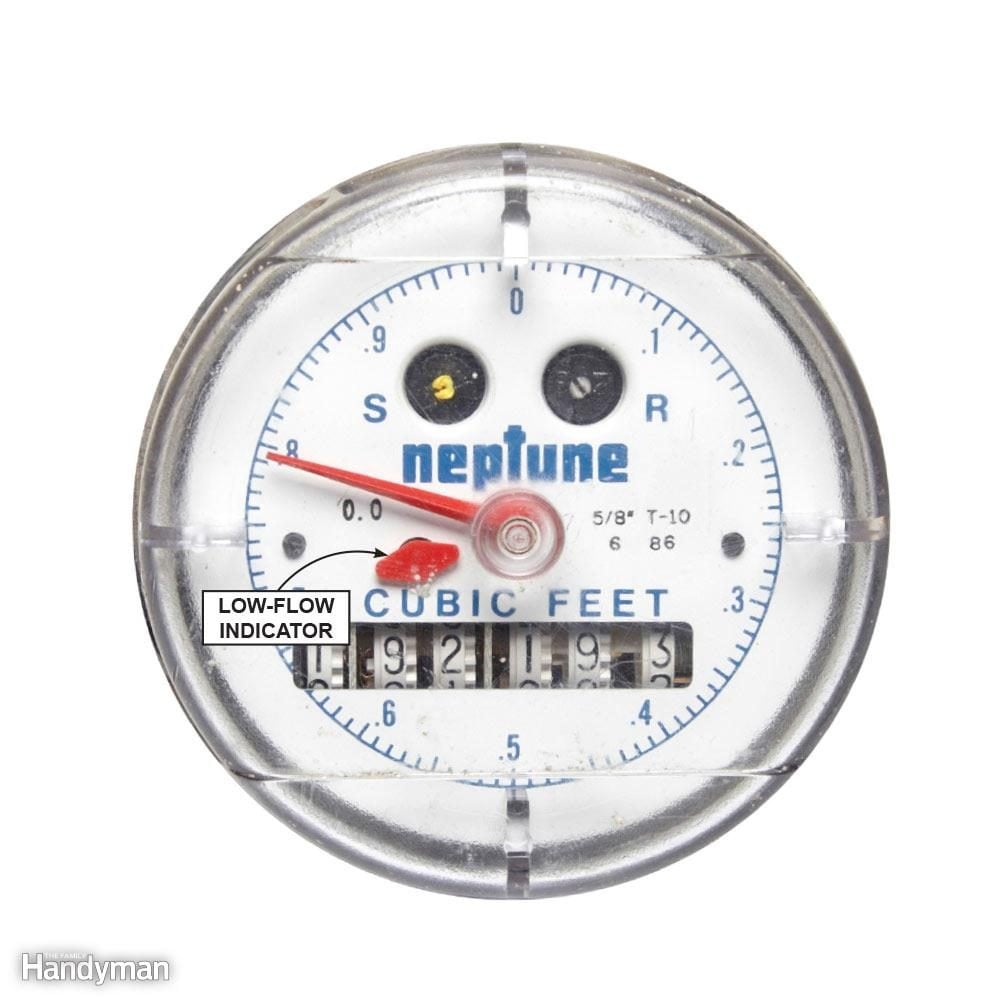
The Water Meter Never Stops?
What it means: You’ve got a leak. If all the faucets and plumbing fixtures in your house are turned off and the low-flow indicator on your water meter continues to measure running water, you’re wasting water and money.

Sometimes Low-Tech is the Best Tech
A great way to prevent leaks and floods is to regularly do a visual check of your plumbing system. Inspect pipes, fittings, supply hoses, shutoff valves and all water-using appliances for signs of corrosion or leaking. Fix small problems before they become big ones. And if you’re going out of town for an extended period of time, shut off the water main (or well pump).
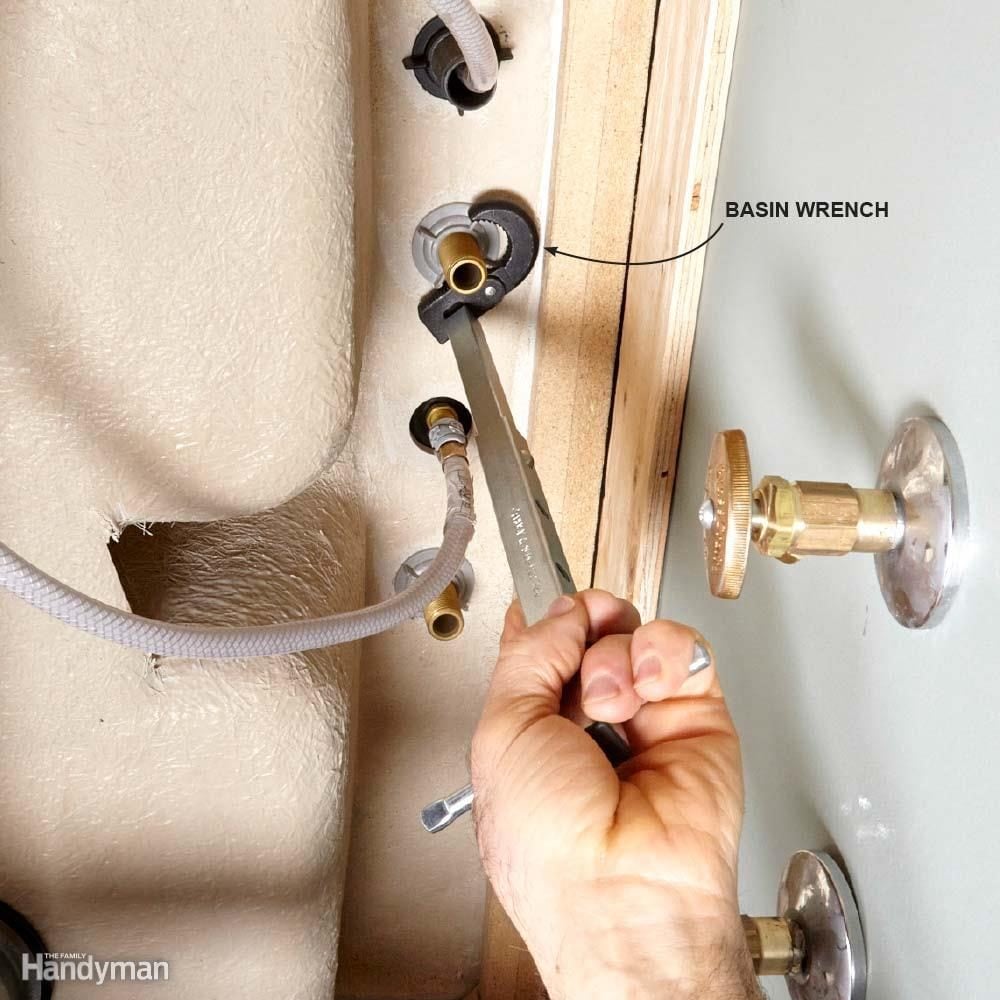
You May Need a Basin Wrench
A basin wrench is a standard plumbing tool that is indispensable for removing and installing most faucets. The wrench allows you to reach into the cramped area behind the sink to loosen or tighten the nuts that hold the faucet to the sink, and the nuts that connect the supply lines. You may not need a basin wrench if you can get the old faucet out by cutting the nuts or if the new faucet includes a wrench or some other means of installing the faucet without a basin wrench. Check inside the package when you buy the faucet to see what’s required. If you do need a basin wrench, you can find one at a hardware store or home center.
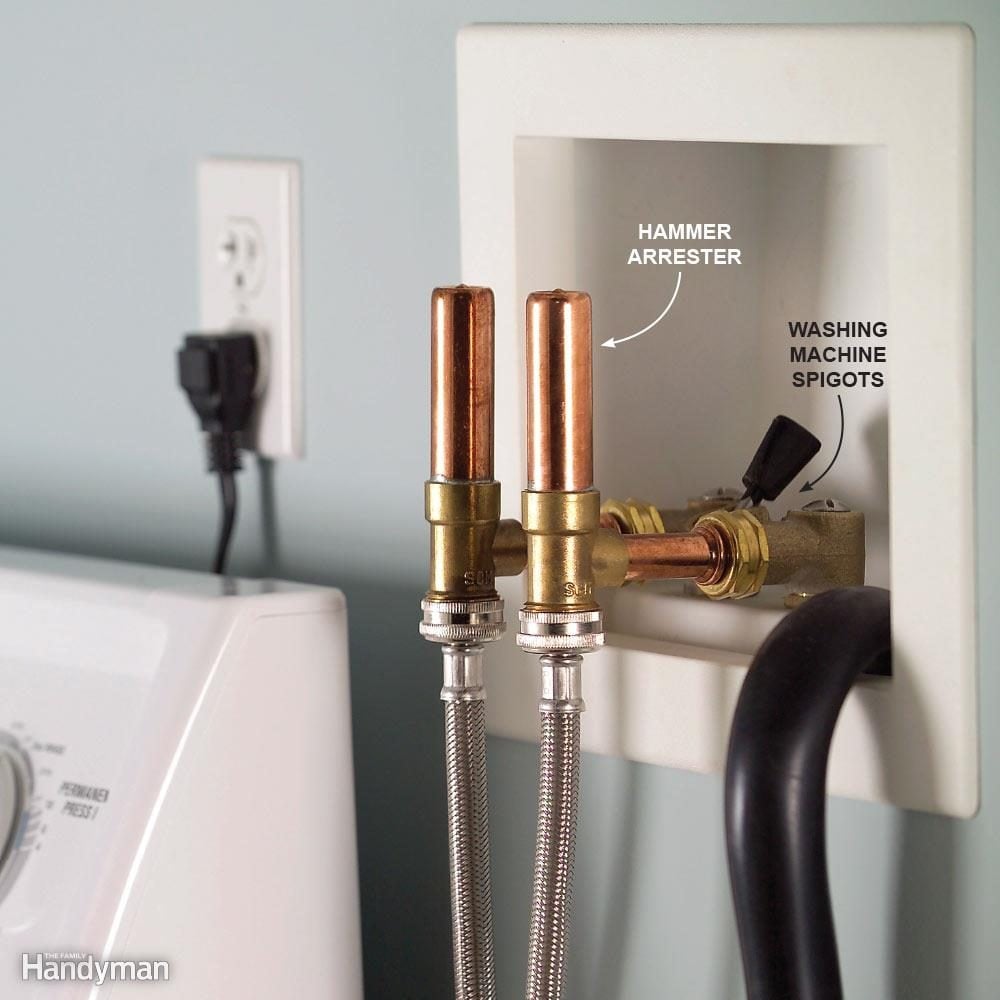
Fix for Noisy Pipes: Install a Water Hammer Arrester
Solenoid valves, like the ones in dishwashers, washing machines and water softeners, shut off almost instantly, which causes a ferocious CLUNK in your plumbing. Aside from the noise, this also puts strain on hoses and fittings. Hand-controlled faucets usually don’t cause as much hammering because the shutoff is more gradual. Install water hammer arresters, which are available at home centers. An arrester isolates the pocket of air from the water in the pipes with a rubber gasketed piston. The closer you locate the arrester to solenoid valves, the better. The model shown is designed to mount between the spigot and the washing machine feed lines with simple hose bib connections. If necessary, add more in-line arresters in other water pipes near faucets or valves to further reduce hammering. Plus: 12 really important things your plumber wants you to know.
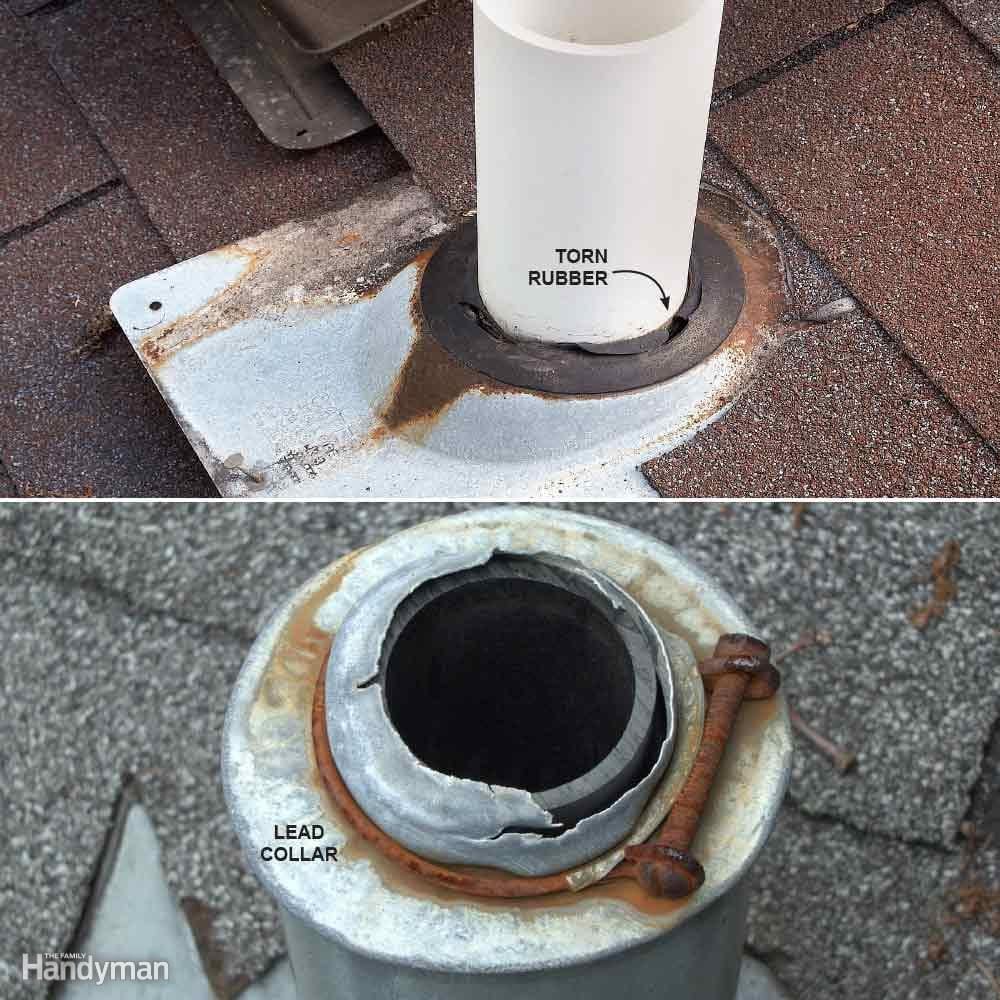
Vent Flashing Failure
Your plumbing system includes “vent” pipes that pass through the roof. And like any other roof penetration, that sometimes means trouble. There are two kinds of flashing used to seal vents: a “boot” that relies on a snug rubber seal, and all-metal flashing with soft lead that can be bent over and into the pipe. Some versions are made completely from lead; others are galvanized steel with a lead collar. When any type of vent flashing fails, the solution is to replace it.
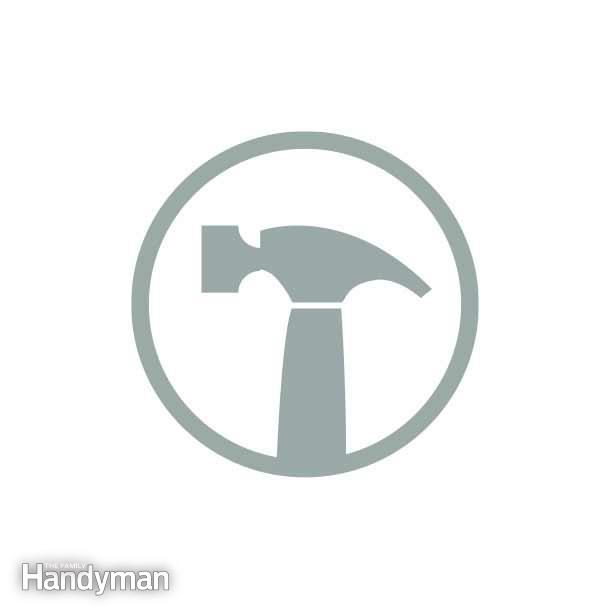
Know Where the Pros Shop
Home centers don’t always carry unusual materials. Try a full-service lumberyard for moldings, a tile shop for the widest selection of adhesives and grout, or a plumbing retailer to find the largest selection of fixtures or that unique faucet part you need.
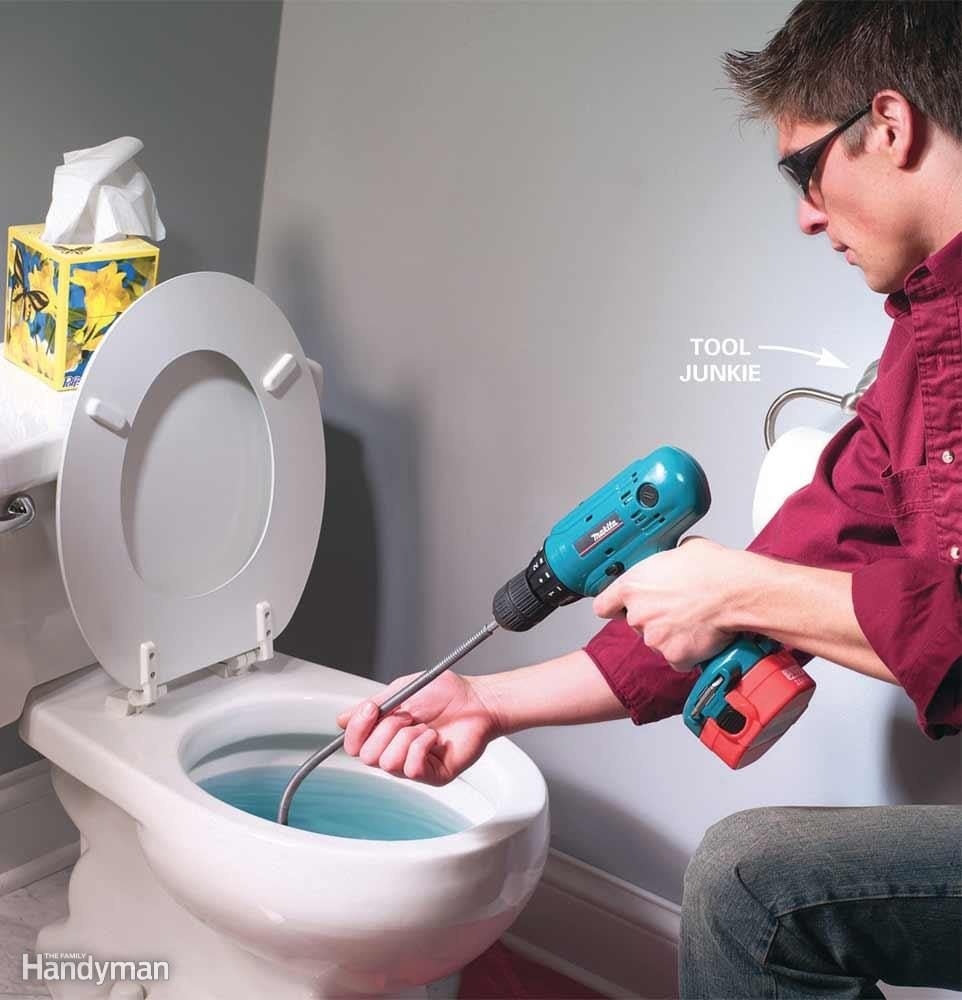
Power Snake
I never had much luck augering toilets with those crooked, S-shaped handles that come with plumbing snakes. Instead, I cut my snake down to 6 ft. and made an adapter I can hook up to a cordless drill. Cut the head off a long lag bolt that’ll thread inside the snake. Chuck the bolt into a cordless drill, and on the ‘slow’ setting, screw the lag bolt into the snake. The power auger will bust through the worst clogs. Go easy on the trigger; it doesn’t have to spin fast.
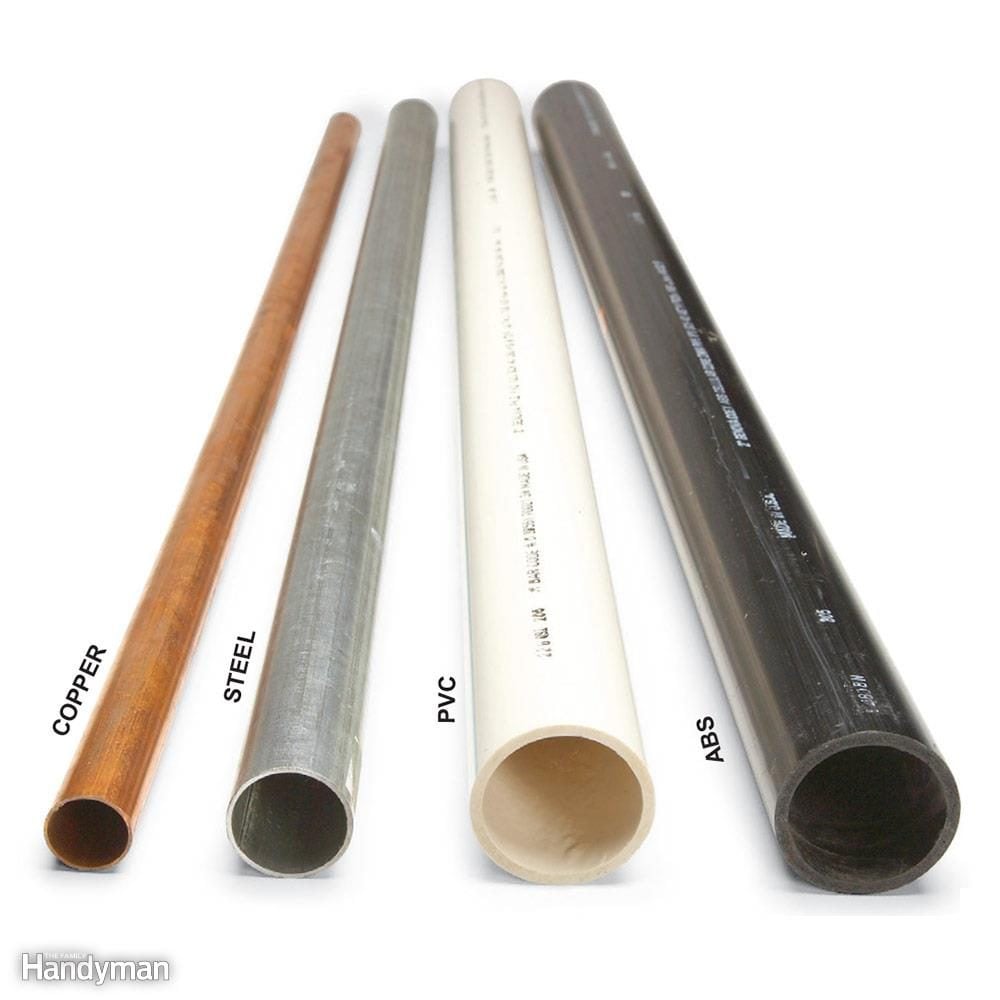
Dealing With Pipe
A circular saw makes short work of pipe—any kind but cast iron. Use a fine-tooth carbide blade for PVC, ABS or copper. Choose a metal-cutting blade for cutting steel, such as fence posts, and metal plumbing pipe.
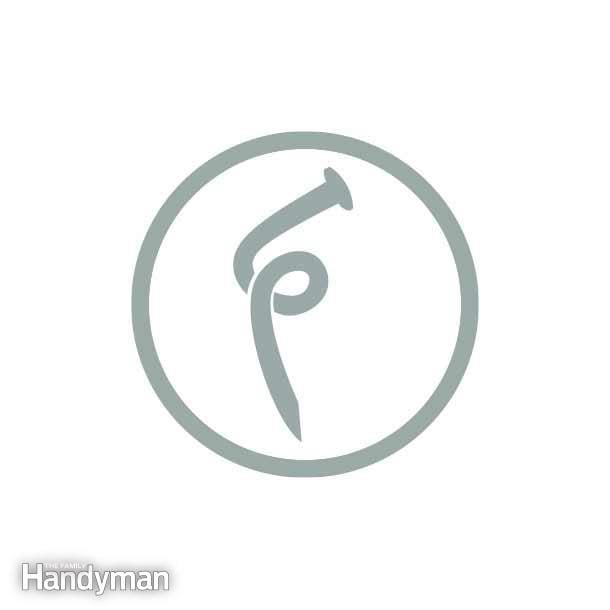
Constipated Pipes
We had a chronically slow drain that resisted all the common drain cleaners. One day my wife came across an old container of Metamucil and had a brainstorm: If it cleans out people’s ‘pipes,’ it should clear out plumbing, too. She dumped the whole container down the drain. The Metamucil absorbed water and expanded into a solid 10-ft.-long clog.
We tried liquid drain openers, a drain snake and even a big drill-powered snake, but none of them could penetrate the monster clog. Finally, I duct-taped a spoon to a pole and scooped the gelatinous mass out through the cleanout opening, spoonful by spoonful. It was like getting cranberry sauce out of a 10-ft.-long can.
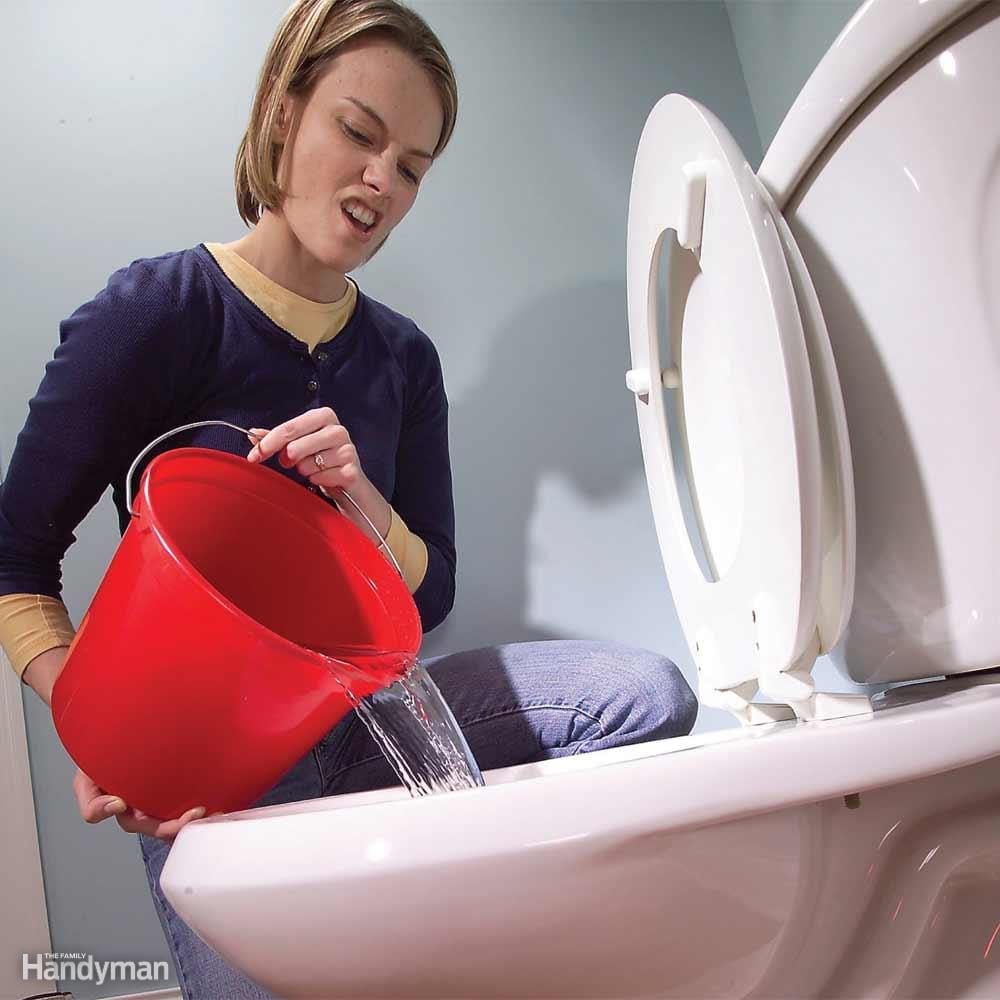
Bucket Flush
You don’t have to run to the neighbor’s bathroom during a plumbing project. Before you turn off the water supply, fill 2-gallon buckets with water. Flush the toilet by dumping the water in the bowl. You’ll get one flush per bucket. Works just as well as the usual method, although it won’t refill the bowl.
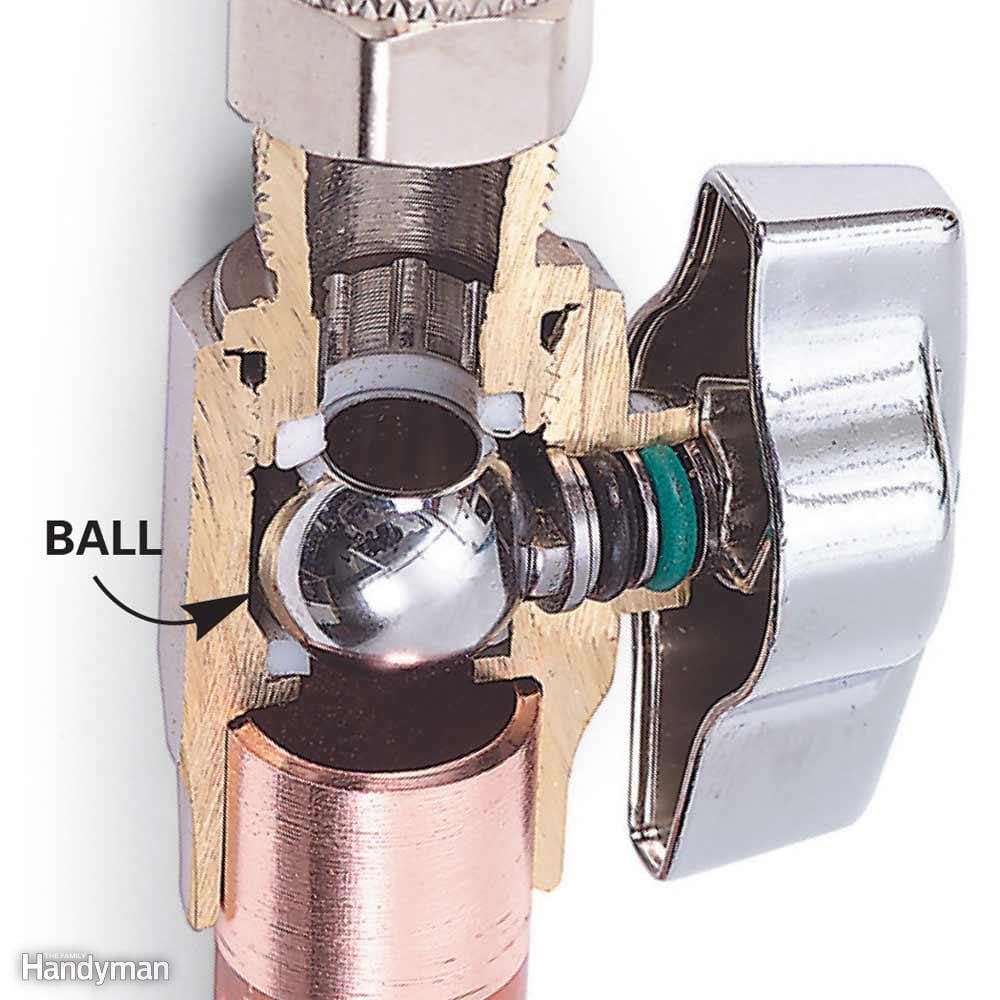
Improved Shutoff Valves Won’t Fail When You Need Them
If you’re remodeling your kitchen or adding a bathroom, here’s some advice you’ll thank us for later: Choose ball-type shutoff valves instead of standard stop valves. Shutoff valves go unused for years. Standard valves have rubber washers that harden with time and other fussy parts that become caked with mineral deposits. Then—when the time comes to replace the faucet or fix the toilet—the valve won’t seal off the water flow.
Ball valves are simpler inside. A ball with a hole through it opens and closes with a quarter turn. Fewer complex parts, fewer things to go wrong. Ball valves almost never let you down. This reliability costs you about 50 percent more than standard valves, but they’re still well under 10 bucks. Ball valves are sometimes labeled ‘quarter turn’ valves. If you don’t find them at a home center or a hardware store, call a plumbing supply store.

Plumber’s Glove
Gardening gloves with a rubbery coating are great for plumbing projects: They grip pipe like a vise and keep that nasty acid flux off your hands. But don’t wear them while soldering; some coatings are flammable.



















